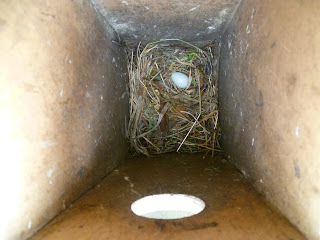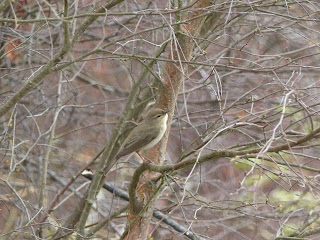Yesterday's nestbox check was successful and we ringed 5 broods of chicks ( 4 Blue Tits and 1 Great Tit). The Pied Flycatcher's nest was still going strong, with a female bird incubating, and there were another 17 nests with eggs and/or small chicks in). Unfortunately, 2 broods had failed, with dead birds found in the nests.
Today's visit, with Luke, took place between 7.00am and 8.45am, and we walked around the middle and top reservoirs. The highlights were the Shag (now present since Nov 21st 2015!), 7 Swifts (my first Linacre record of 2016), the first juvenile Robin of 2016 and an active Great-spotted Woodpecker nest. There were also 3 Grey Wagtails (2 adults and 1 juvenile), 6 Coots (all adults), 4 Moorhens (2 adults and 2 half grown chicks), 12 Tufted Ducks (all adults), just 1 adult Great-crested Grebe , 29 Mallards (18 adults and 11 ducklings) and 2 male Mandarin Ducks going into eclipse plumage. Chiffchaffs, Blackcaps and 1 Willow Warbler were all singing. We also had hundreds of tadpoles in the shallow water by the boardwalk on the top reservoir.
Shag
Tadpoles
Male Mandarin Ducks (moulting)






























